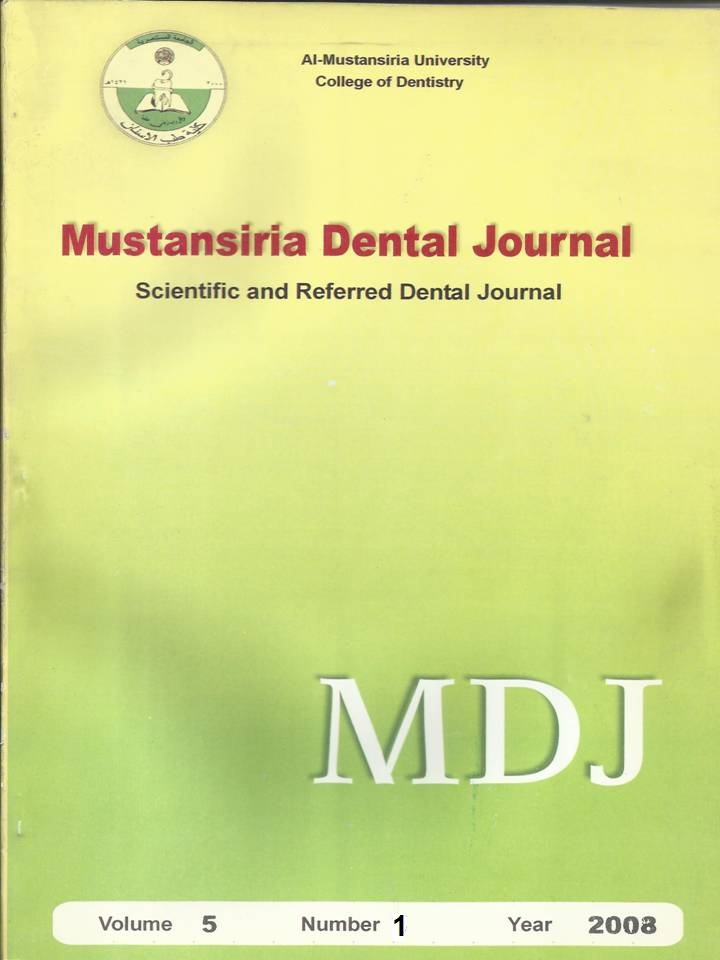Influence of different recycling protocols on load deflection of nickel titanium orthodontic wire
DOI:
https://doi.org/10.32828/mdj.v5i1.508Keywords:
Key word: Influence of recycling, load deflection, orthodontic nickel titaniumAbstract
The purpose of this study was to investigate the changes in the load deflection of nickel titanium orthodontic wire after different recycling protocols. A spooled 0.014 inch nickel titanium wire was separated into 7 groups: as received condition (T0,control group),treated in artificial saliva for 4 weeks (T1), treated in artificial saliva and autoclaved (T2), treated in artificial saliva and dry heated (T3), treated in artificial saliva and disinfected by glutaraldehyde (T4), treated in artificial saliva and disinfected by iodophor (T5) and treated in artificial saliva and disinfected by chlorhexidine (T6).The changes in the load deflection were observed by special test apparatus based on 3-point bending mechanism, the findings of the current study showed that there was highly significant difference in mean load deflection of nickel titanium wire between all recycling protocols (P< 0.0001). The recycling by sterilization of the wire by heat autoclave or disinfection by chlorhexidine both seem to be the best recycling protocols because of lowest detrimental effect on the load deflection, while the disinfection by glutaraldehyde or iodophor shows intermediate detrimental effect on the load deflection, and the sterilization by dry heat seems to be the worst recycling protocol because it shows highest detrimental effect on the load deflection value.
Downloads
Published
Issue
Section
License
The Journal of Mustansiria Dental Journal is an open-access journal that all contents are free of charge. Articles of this journal are licensed under the terms of the Creative Commons Attribution International Public License CC-BY 4.0 (https://creativecommons.org/licenses/by/4.0/legalcode) that licensees are unrestrictly allowed to search, download, share, distribute, print, or link to the full texts of the articles, crawl them for indexing and reproduce any medium of the articles provided that they give the author(s) proper credits (citation). The journal allows the author(s) to retain the copyright of their published article.
Creative Commons-Attribution (BY)









